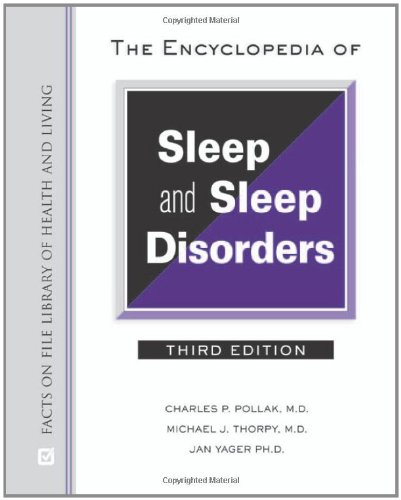Synopsis
Approximately 60 million Americans suffer from some kind of chronic sleep disorder or sporadic problem sleeping, according to the National Center on Sleep Disorders Research (NCSDR) of the National Institutes of Health. It is now documented that sleep deprivation can facilitate mistakes or accidents at work, mood swings, an increased chance of obesity, and drowsy driving, which causes an estimated 100,000 car crashes and 1,500 fatalities annually. Sleep disorders, such as sleep apnea, have been linked to an increased likelihood of stroke, hypertension, or heart failure. In recent years, researchers have made breakthroughs in understanding sleep, why it is crucial to general health, and what disrupts it.
The Encyclopedia of Sleep and Sleep Disorders, Third Edition examines the key terms, conditions, remedies, long-term health consequences, and advances that have been made in understanding sleep, including sleep research, sleep disorder diagnosis, and treatment. This timely revised edition covers more than 80 sleep disorders in more than 800 entries and includes three informative essays: "History of Sleep and Man," "Psychology of Sleep," and "Sociology of Sleep." A new introduction, helpful appendixes, a bibliography, a list of Web site resources, and an index complete this extensive reference.
Reviews
Sleep disorders affect millions of people. Authored by a team of subject experts, The Encyclopedia of Sleep and Sleep Disorders presents authoritative information on topics including the diagnosis and treatment of sleep disorders, definitions of key terms, biographies of researchers, descriptions of medications, long-term consequences of sleep deprivation, and advances in sleep research. Written in language accessible to the layperson, the 800 alphabetically arranged entries range in length from a single sentence to several pages. New to the third edition are longer entries on topics such as aging and sleep, drugs and sleep, and the treatment of sleep disorders, as well as an updated and expanded bibliography. Sample entries include Adenosine, Anxiety disorders, Dream content, Epworth Sleepiness Scale, Hyoid myotomy, Insomnia, Light therapy, National Sleep Foundation, Tongue retaining device, and Vigilance testing. Case histories included in selected entries provide human interest. Multiple-page essays on “The History of Sleep and Man,” “The Sociology of Sleep,” and “Psychology and Sleep: The Interdependence of Sleep and Waking States” offer the reader enhanced coverage of these areas of research. Appendixes include “Sources of Information,” “Research Organizations,” and “Selected Sleep Centers.” In addition, a 13-page bibliography of books, journal articles, magazine articles, newspaper articles, and online publications supplies sources for further reading. Ample see and see also references link one entry to another. A well-constructed 24-page index provides subject access to the contents. Notable for the subject expertise of the authors, The Encyclopedia of Sleep and Sleep Disorders provides authoritative content on a topic of interest to many. It is recommended for public, undergraduate, and special libraries with a need for general medical reference works. Also available as an e-book. --Nancy Cannon
"About this title" may belong to another edition of this title.
